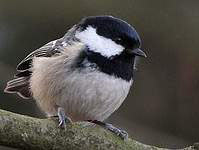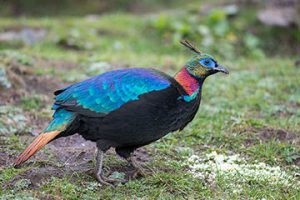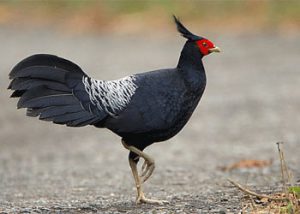A holiday in the Himalayan republic of Nepal can combine incredible treks, stunning wildlife, fascinating culture and magnificent scenery. You could take it easy in characterful hotels in Kathmandu and enjoy the architecture and life of the city, or you could head for the mountains and camp in amongst the wilderness. Nepal holidays really can be very different and depend totally on what type of experience you want. Nepal has a profusion of wildlife in some excellent national parks from the popular Chitwan in the lowland Terai, to the lesser visited Royal Bardia in the west of the country. There really is a chance of seeing tigers here as well as the great one-horned Asian rhinos, and the bird watching in some of the more remote national parks is superb.
Nepal has a diverse range of ecosystems from lowland sub-tropical forests right through to the high altitude environments of the Himalayas. Some 160 species of mammals and 871 species of birds can be found. There are numerous national parks and wildlife reserves providing unique opportunities to view this exotic and rare wildlife.

01 Day. Kathmandu.
Arrive Kathmandu Airport, meeting and transfer to Hotel like Royal Singi – Centrally located 4 Star. Overnight.

02 Day. Kathmandu.
Full day birding around Phulchowki Hill – Phulchowki (2760 m) is the highest of the mountains encircling the Kathmandu valley. This broad-leafed-sub tropical forest is the richest for birds and wildlife in the valley and remains the most convenient place to see some of the birds that are rare or local to Nepal. Phulchowki lies 18 km south east of Kathmandu above Godawari Village (1525 m).

03 Day. Kathmandu/Chitwan National Park.
Post breakfast drive to Chitwan National Park, 165 kms about 4.5 hrs. Chitwan National Park stands today as a successful testimony of nature conservation in South Asia. This is the first national park of Nepal established in 1973 to preserve a unique ecosystem significantly valuable to the whole world. The park covering a pristine area of 932 sq. km is situated in the subtropical inner Terai lowlands of southern central part of Nepal. The park has gained much wider recognition in the world when UNESCO included this area on the list of World Heritage Site in 1984.
Formerly, the Chitwan valley was well known for big game and was exclusively managed as a hunting reserve for the Rana Prime Ministers and their guests until 1950. In 1963, the area south of Rapti was demarcated as a rhinoceros sanctuary. In 1970, His late Majesty King Mahendra had approved in principle the creation of Chitwan National Park.
The park consists of Churia Hills, Ox-bow Lakes, flood plains of Rapti, Reu and Narayani rivers. The Churia Hill rises gradually towards the east from 150 m to over 800 m. The lower but most rugged Someshwor Hills occupy most of the western portion of the park. The flood plains of Chitwan are rich alluvial. The park boundaries have been delineated by the Narayani and Rapti rivers in the north and west, and the Reu river and Someshwor hills in the south and south-west. It shares its eastern border with Parsa Wildlife Reserve. Overnight at Tiger Land or similar resort.
04 – 05 Days. Chitwan National Park
We will have jeep safaris (morning and afternoon) and elephant safari as per the plan, escorted by a bird guide and driver, who will inform all about the birds, mammals, etc and take us to different tracks in a process that we shall cover maximum areas of this vast park, often encountering river beds flushed with water, perennial streams, grass lands and some undulating portions. From well wooded to open fields, the visibility will be of advantage and birds will be all around us. Overnight.
Day 6. Chitwan National Park/Pokhara.
Drive to Pokhara, 135 kms and about 3.5 hrs drive. Pokhara is situated in the north western corner of the Pokhara Valley, 198 kms west of Kathmandu City, which is a widening of the Seti Gandaki Valley. The Seti River and its tributaries have dug impressive canyons into the valley floor, which are only visible from higher viewpoints or from the air. It will be a long drive so we will stop at some points to locate birds and photograph village life and landscape.
Overnight say at Fishtail Lodge.
Day 7. Pokhara.
Full day birding around Pokhara.
Day 8. Pokhara/Kathmandu.
Drive back to Kathmandu. In the evening transfer to Nepalese Restaurant for Typical Nepalese Dinner with Live Cultural Program. Overnight.
Day 9. Kathmandu international airport
Transfer to Kathmandu international airport. Farewell.
